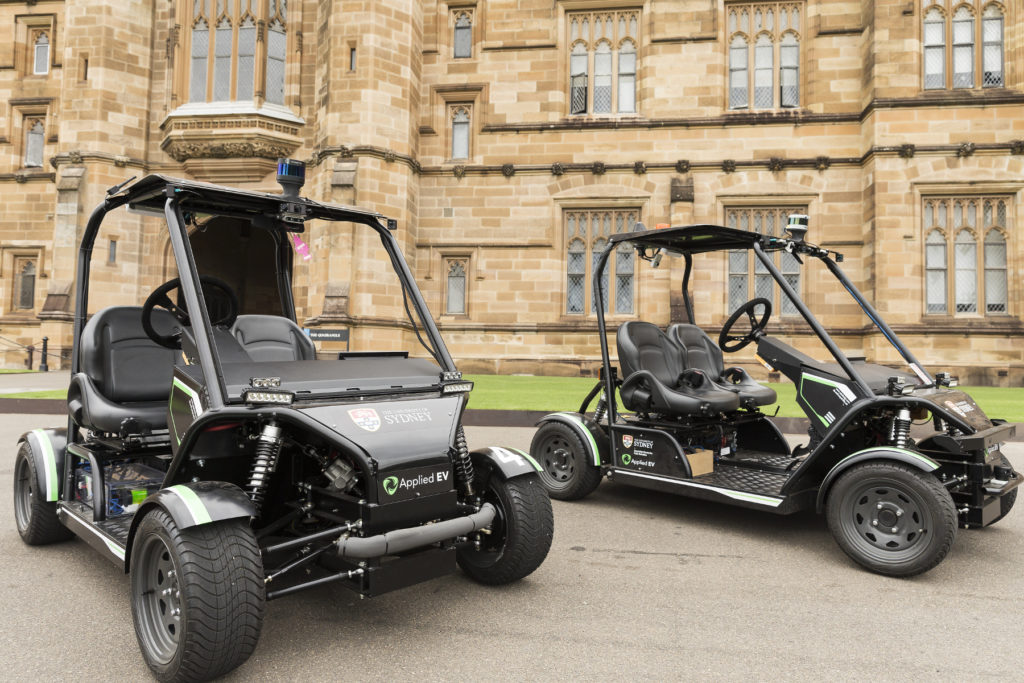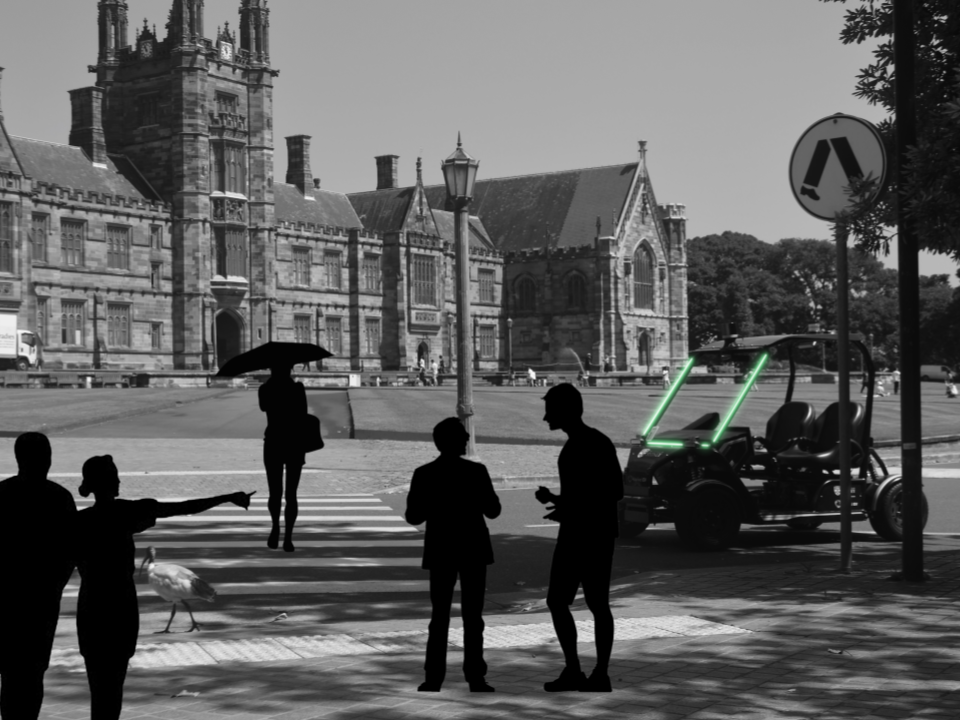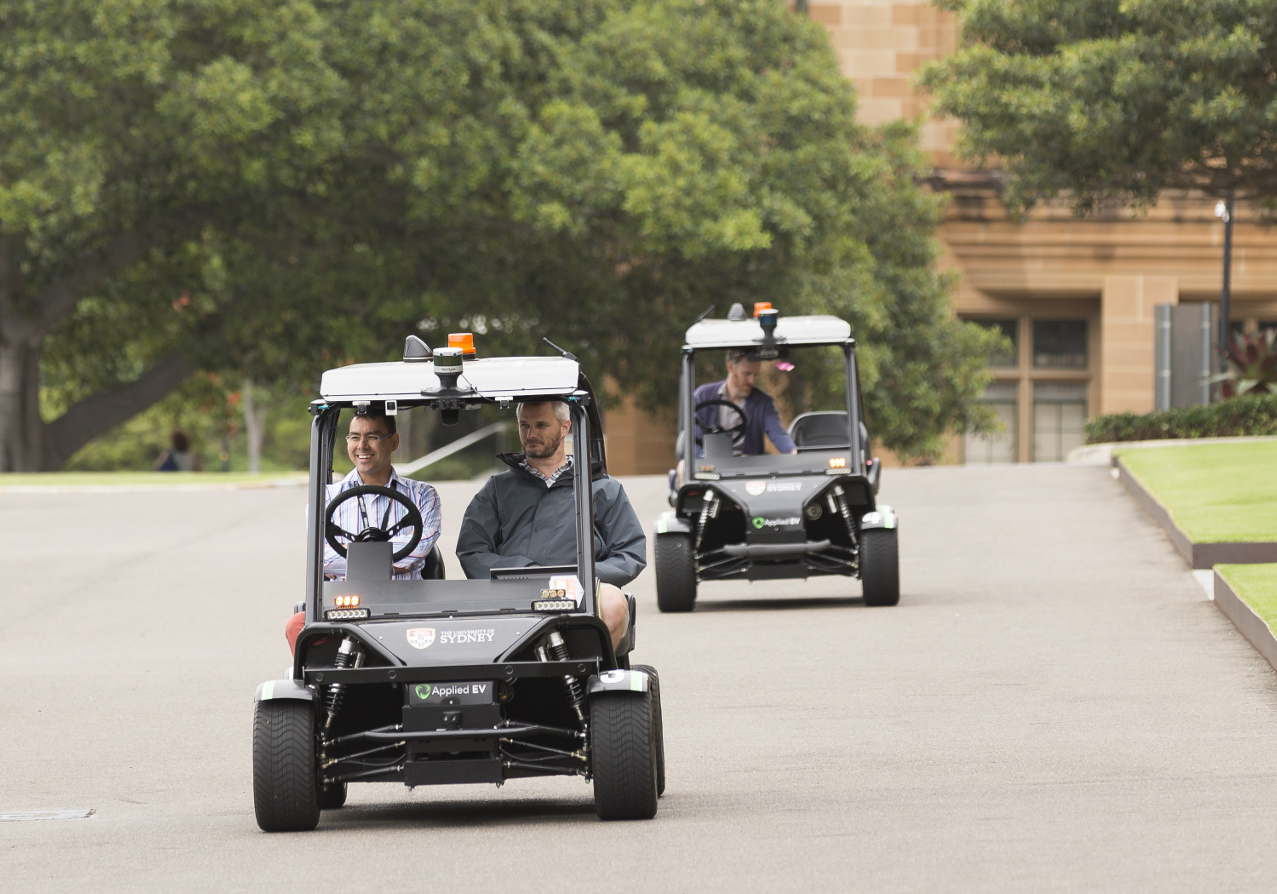Project Background
Autonomous vehicles have the potential to revolutionise mobility in smart cities of the future. Shared self-driving cars or pods could be used in shared spaces to enable last mile transportation. The introduction of this technology is dependent on the ability of the vehicles to safely and efficiently interact with pedestrians. This will undoubtedly require an effective mechanism to communicate information in both directions between the autonomous car and the pedestrians, replacing the often subtle non-verbal communication that humans can naturally perform between each other.
The collaboration between engineering (Australian Centre for Field Robotics) and architecture and design (Design Lab, Smart Urbanism Lab provides a comprehensive set of research backgrounds to explore this problem. The ACFR have developed two AV platforms which are used to demonstrate the various autonomous vehicle functions in a shared environment. The Design lab has extensive experience developing and validating human-machine interfaces using innovative approaches that include the use of virtual reality.
Project Aims
This project has been developed over the last few years and is now being funded by an ARC discovery project. This project has the aims of:
- To develop means for allowing pedestrian participants to interact with AVs in a VR environment using devices (e.g. a smartphone) and gestures (e.g. hand waving), thus extending the one-way communication in previous VR simulations of AVs to allow for a bi-directional communication between pedestrians and AVs.
- To compare the effectiveness of a 3D modelled AV and environment with 360-degree video recordings from the physical AV and environment for evaluating perceived trust and safety.
- To validate the efficacy of hyperreal prototypes by comparing how participants respond to VR representations of AVs and their AV-pedestrian interfaces with how participants respond to the same AV-pedestrian interfaces implemented on our existing physical AV experienced in a real urban environment.
The main research themes for this project include examining the trust that exists between pedestrians and vehicles. We also hope to understand how computers can be used to estimate the intentions of pedestrians. This will be used to influence the HMI design.
Research Themes
Engineering: Dr Stewart Worrall

Design: A/Prof Martin Tomitsch

Smart Urbanism: Dr Jennifer Kent
Publications:
Hoggenmueller, M., Tomitsch, M., Hespanhol, L., Tran, T. T. M., Worrall, S. & Nebot, E. (2021).
Context-based interface prototyping: Understanding the effect of prototype representation on
user feedback. In Conference on human factors in computing systems (chi).
Hoggenmueller, M., Tomitsch, M., Parker, C., Nguyen, T. T., Zhou, D., Worrall, S. & Nebot, E.
(2020). A tangible multi-display toolkit to support the collaborative design exploration of
av-pedestrian interfaces. In 32nd australian conference on human-computer interaction (pp. 25–35).
